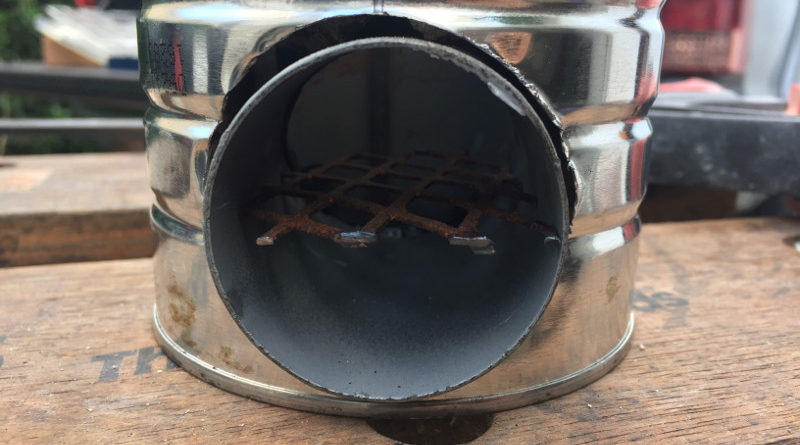Rocket Stove Primer: Meeting notes
For those who missed the meeting, here are the notes about modern stone-age technology.
Basic fire combustion efficiency:
- Fire is a self-sustaining chemical reaction
- Not enough oxygen = incomplete burn = dirty smoke (unburned/wasted compounds)
Not enough energy (heat) = incomplete burn = dirty smoke (unburned/wasted compounds) - Rocket stoves create a draft to supply ample oxygen, and insulate the burn area to maintain ample heat
= complete burn, less fuel required, minimal smoke and ash.
Users: Off-grid, by choice or circumstances
- Backup cooking / heating
- BioLite camp stove + charger
- Dos por Tres in Honduras (Habitat for Humanity construction model)
History of Development
- 1980: Larry Winiarski started developing the rocket stove, based on a Vita stove. Wrote the 10 principles
- 1780: Aimé Argand patented the Argand oil lamp, which used a glass chimney to create a draft over the wick
- 350 BCE: Romans developed hypocaust heating systems, which directed a draft through a fire and beneath flooring
Larry Winiarski’s 10 principles of Rocket Stoves:
- Insulate, particularly the combustion chamber
- Use an insulated, upright chimney above the combustion chamber, of a height 2-3 times the diameter
- Heat only the fuel that is burning
- Maintain a good air velocity through the fuel.
- Do not allow too much or too little air to enter the combustion chamber. Strive to have stoichiometric (chemically ideal) combustion Note: Most hobbyists find designating ⅓-½ of the feed tube for air to be ideal
- The cross sectional area of the combustion chamber should be sized within the range of power level of the stove. 25 square inches will suffice for home use.
- Elevate the fuel and distribute airflow around the fuel surfaces. When burning sticks of wood, it is best to have several sticks close together, not touching, leaving air spaces between them.
- Arrange the fuel so that air largely flows through the glowing coals.
- Throughout the stove, any place where hot gasses flow, insulate from the higher mass of the stove body, only exposing pots, etc. to direct heat
- Transfer the heat efficiently by making the gaps as narrow as possible without choking the fire.
What next?
- Making biochar for carbon sequestration / agriculture
- Individual scale: Ed Revill modifications to the rocket stove
- Industrial scale: Testing in academic setting
- Generating electricity, syngas, bio oil, etc.
- Replacing store-bought charcoal (illegally / unsustainably harvested hardwood invariably finds its way into the market), E.G. Watchman Stove:
Q&A
Q: Self feeding or no? (angled feed tube to let gravity draw in fuel)
A: If you have a way to clear the ash, and (if making it yourself) can make the slightly more difficult cut in the chimney, it’s great.
Q: What did I use for insulating my stove?
A: Ceramic BBQ briquettes.
Q: For backpacking, how does it compare to a white gas stove?
A: Weight-wise, my build pays off after about 3 days since I don’t carry fuel. There are wood stoves for sale that are rocket-like without insulation, and those will have lower efficiency, but be better from the outset weight-wise. Wood fires are typically prohibited above tree-line or in high fire-risk areas, and the gas stove would win out there.
M (for meandering): Efficiency-wise, there comes a point where, with an abundance of fuel, getting from 75% to 85% may not be worth it. It’s not smoking you out, and the boiling time difference is trivial, so deviating from Larry’s 10 principles is fine.

